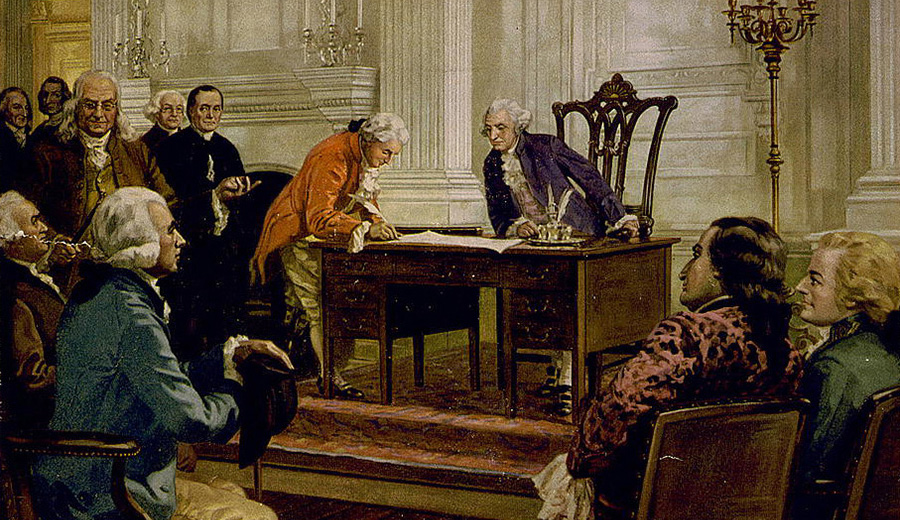
Thirty-nine men signed a newly-drafted document, the U.S. Constitution, in Philadelphia on September 17, 1787. The Society commemorated that event with a Zoom screening of its new 15-minute documentary, Marbury v. Madison: The Empowerment of the Judiciary, which tells the story of the case that first articulated the Supreme Court’s power of judicial review and thus confirmed the judicial branch as co-equal with the legislative and executive branches. The narrator of the documentary explains the facts of the complicated case clearly, and imagery from the time period—oil portraits of the main characters, scenes of Washington D.C., documents relating to the case, contemporary newspaper headlines—are featured to immerse the students in the look and feel of 1803. The video is intended for classroom use by middle school, high school and advanced high school students.
Timothy S. Huebner, chair of the Board of Editors of the Journal of Supreme Court History and a professor of history at Rhodes College, hosted the discussion. Clare Cushman, executive director of the documentary, explained the origins of the Society’s commitment to producing teaching materials. The Marbury documentary completes the trilogy of documentaries on the subject of separation of powers, following “FDR and the Court-Packing Episode of 1937” and “The Supreme Court and the 1876 Election.” She highlighted two of the video’s novel features: newly-commissioned colorful illustrations of key scenes in the case and voice actors speaking the lines of John Adams, Thomas Jefferson, John Jay and John Marshall to convey the emotion in the story.
The Society recommends that teachers supplement the video with lessons plans devised by Street Law for Landmarkcases.org, which it proudly sponsors. Cushman walked participants through those plans—from middle school to advanced high school. Some of the more sophisticated classroom exercises include a moot court of Lopez v. United States (1995), which cites Marbury v. Madison as precedent; a theoretical analysis of the constitutionality of the Judiciary Act of 1789; and a comparison of Jefferson’s and Marshall’s written views on the power of the judiciary. The event wrapped up with a discussion of whether Marbury is the most important legal decision in American history and whether John Marshall should have recused himself because of his involvement as Secretary of State overseeing the delivery of William Marbury’s commission to be justice of the peace.
The documentary can be viewed here on the Society’s website, accompanied by the lesson plans from Landmarkcases.org




